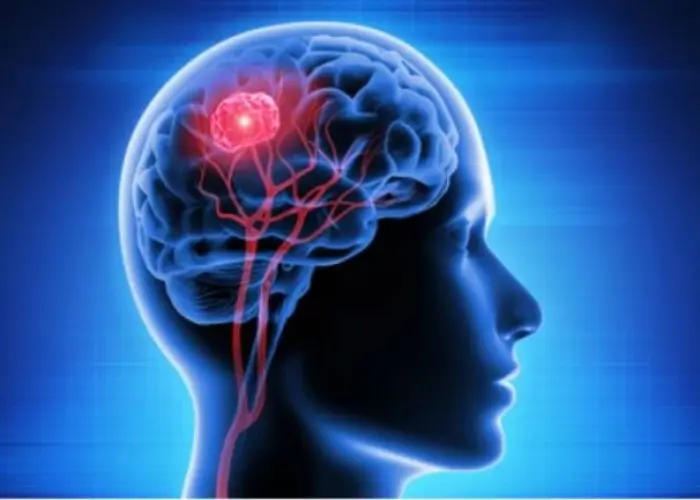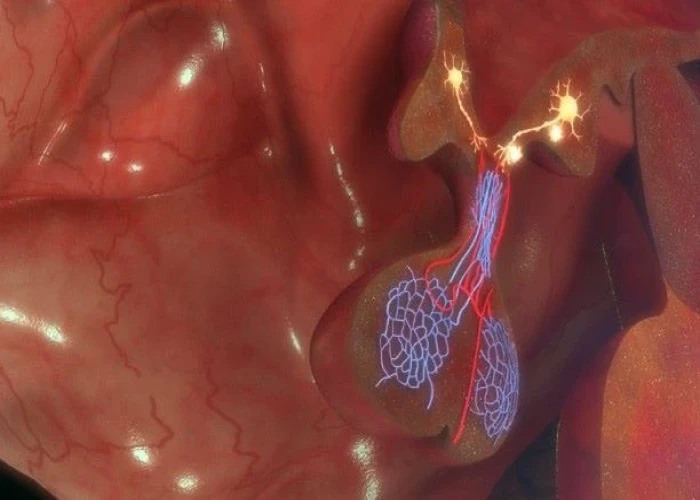 Welcome
Welcome
“May all be happy, may all be healed, may all be at peace and may no one ever suffer."
Brain tumor

A brain tumor is an abnormal growth of cells in the brain. Brain tumors can be benign (non-cancerous) or malignant (cancerous) and can develop from different types of brain cells. Symptoms of a brain tumor may include headache, seizures, difficulty speaking or walking, vision or hearing problems, and changes in mood or personality. Treatment for a brain tumor depends on the type, location, and size of the tumor, as well as the patient's overall health. Treatment options may include surgery, radiation therapy, chemotherapy, or a combination of these treatments. The prognosis for a brain tumor varies depending on the type of tumor and how early it is detected and treated.
Research Papers
Disease Signs and Symptoms
- Headaches
- Gradual loss of sensation or movement in an arm or a leg
- Vision problems, such as blurred vision, double vision or loss of peripheral vision
- Hearing problems or deafness
- Seizures
- Speech problems
- Double vision (diplopia)
- Blurred vision of eye
- Nausea or vomiting
- Personality or behavior changes
Disease Causes
Brain tumor
Brain tumors that begin in the brain
Primary brain tumors originate in the brain itself or in tissues close to it, such as in the brain-covering membranes (meninges), cranial nerves, pituitary gland or pineal gland.
Primary brain tumors begin when normal cells develop changes (mutations) in their DNA. A cell's DNA contains the instructions that tell a cell what to do. The mutations tell the cells to grow and divide rapidly and to continue living when healthy cells would die. The result is a mass of abnormal cells, which forms a tumor.
In adults, primary brain tumors are much less common than are secondary brain tumors, in which cancer begins elsewhere and spreads to the brain.
Many different types of primary brain tumors exist. Each gets its name from the type of cells involved. Examples include:
- Gliomas. These tumors begin in the brain or spinal cord and include astrocytomas, ependymomas, glioblastomas, oligoastrocytomas and oligodendrogliomas.
- Meningiomas. A meningioma is a tumor that arises from the membranes that surround your brain and spinal cord (meninges). Most meningiomas are noncancerous.
- Acoustic neuromas (schwannomas). These are benign tumors that develop on the nerves that control balance and hearing leading from your inner ear to your brain.
- Pituitary adenomas. These are tumors that develop in the pituitary gland at the base of the brain. These tumors can affect the pituitary hormones with effects throughout the body.
- Medulloblastomas. These cancerous brain tumors are most common in children, though they can occur at any age. A medulloblastoma starts in the lower back part of the brain and tends to spread through the spinal fluid.
- Germ cell tumors. Germ cell tumors may develop during childhood where the testicles or ovaries will form. But sometimes germ cell tumors affect other parts of the body, such as the brain.
- Craniopharyngiomas. These rare tumors start near the brain's pituitary gland, which secretes hormones that control many body functions. As the craniopharyngioma slowly grows, it can affect the pituitary gland and other structures near the brain.
Cancer that begins elsewhere and spreads to the brain
Secondary (metastatic) brain tumors are tumors that result from cancer that starts elsewhere in your body and then spreads (metastasizes) to your brain.
Secondary brain tumors most often occur in people who have a history of cancer. Rarely, a metastatic brain tumor may be the first sign of cancer that began elsewhere in your body.
In adults, secondary brain tumors are far more common than are primary brain tumors.
Any cancer can spread to the brain, but common types include:
- Breast cancer
- Colon cancer
- Kidney cancer
- Lung cancer
- Melanoma
Disease Prevents
Disease Treatments
Treatment for a brain tumor depends on the type, size and location of the tumor, as well as your overall health and your preferences.
Surgery
If the brain tumor is located in a place that makes it accessible for an operation, your surgeon will work to remove as much of the brain tumor as can be done safely.
Some brain tumors are small and easy to separate from surrounding brain tissue, which makes complete surgical removal possible. Other brain tumors can't be separated from surrounding tissue or they're located near sensitive areas in your brain, making surgery risky. In these situations, your doctor removes as much of the tumor as is safe.
Even removing a portion of the brain tumor may help reduce your signs and symptoms.
Surgery to remove a brain tumor carries risks, such as infection and bleeding. Other risks may depend on the part of your brain where your tumor is located. For instance, surgery on a tumor near nerves that connect to your eyes may carry a risk of vision loss.
Radiation therapy
Radiation therapy uses high-energy beams, such as X-rays or protons, to kill tumor cells. Radiation therapy can come from a machine outside your body (external beam radiation), or, very rarely, radiation can be placed inside your body close to your brain tumor (brachytherapy).
External beam radiation can focus just on the area of your brain where the tumor is located, or it can be applied to your entire brain (whole-brain radiation). Whole-brain radiation is most often used to treat cancer that spreads to the brain from some other part of the body and forms multiple tumors in the brain.
Traditionally, radiation therapy uses X-rays, but a newer form of this treatment uses proton beams. Proton beam therapy allows doctors to control the radiation more precisely. It may be helpful for treating brain tumors in children and tumors that are very close to sensitive areas of the brain. Proton beam therapy isn't as widely available as traditional X-ray radiation therapy.
Side effects of radiation therapy depend on the type and dose of radiation you receive. Common side effects during or immediately following radiation include fatigue, headaches, memory loss, scalp irritation and hair loss.
Radiosurgery
Stereotactic radiosurgery is not a form of surgery in the traditional sense. Instead, radiosurgery uses multiple beams of radiation to give a highly focused form of radiation treatment to kill the tumor cells in a very small area. Each beam of radiation isn't particularly powerful, but the point where all the beams meet — at the brain tumor — receives a very large dose of radiation to kill the tumor cells.
There are different types of technology used in radiosurgery to deliver radiation to treat brain tumors, such as a Gamma Knife or linear accelerator.
Radiosurgery is typically done in one treatment, and usually you can go home the same day.
Chemotherapy
Chemotherapy uses drugs to kill tumor cells. Chemotherapy drugs can be taken orally in pill form or injected into a vein (intravenously). The chemotherapy drug used most often to treat brain tumors is temozolomide (Temodar). Other chemotherapy drugs may be recommended depending on the type of cancer.
Chemotherapy side effects depend on the type and dose of drugs you receive. Chemotherapy can cause nausea, vomiting and hair loss.
Tests of your brain tumor cells can determine whether chemotherapy will be helpful for you. The type of brain tumor you have also is helpful in determining whether to recommend chemotherapy.
Targeted drug therapy
Targeted drug treatments focus on specific abnormalities present within cancer cells. By blocking these abnormalities, targeted drug treatments can cause cancer cells to die.
Targeted therapy drugs are available for certain types of brain tumors, and many more are being studied in clinical trials. Your doctor may have your tumor cells tested to see whether targeted therapy is likely to be an effective treatment for your brain tumor.
Rehabilitation after treatment
Because brain tumors can develop in parts of the brain that control motor skills, speech, vision and thinking, rehabilitation may be a necessary part of recovery. Depending on your needs, your doctor may refer you to:
- Physical therapy to help you regain lost motor skills or muscle strength
- Occupational therapy to help you get back to your normal daily activities, including work, after a brain tumor or other illness
- Speech therapy with specialists in speech difficulties (speech pathologists) to help if you have difficulty speaking
- Tutoring for school-age children to help kids cope with changes in their memory and thinking after a brain tumor
Disease Diagnoses
Disease Allopathic Generics
Disease Ayurvedic Generics
Disease Homeopathic Generics
Disease yoga
Brain tumor and Learn More about Diseases

Reactive arthritis

Ruptured spleen

Membranous nephropathy

Chronic daily headaches

Peanut allergy

Bacillary Dysentry

Hyper Sex Apetite

Pituitary tumors
Brain tumor, Glioblastoma, Meningioma, Glioma, Brain cancer, মস্তিষ্ক টিউমার
To be happy, beautiful, healthy, wealthy, hale and long-lived stay with DM3S.
